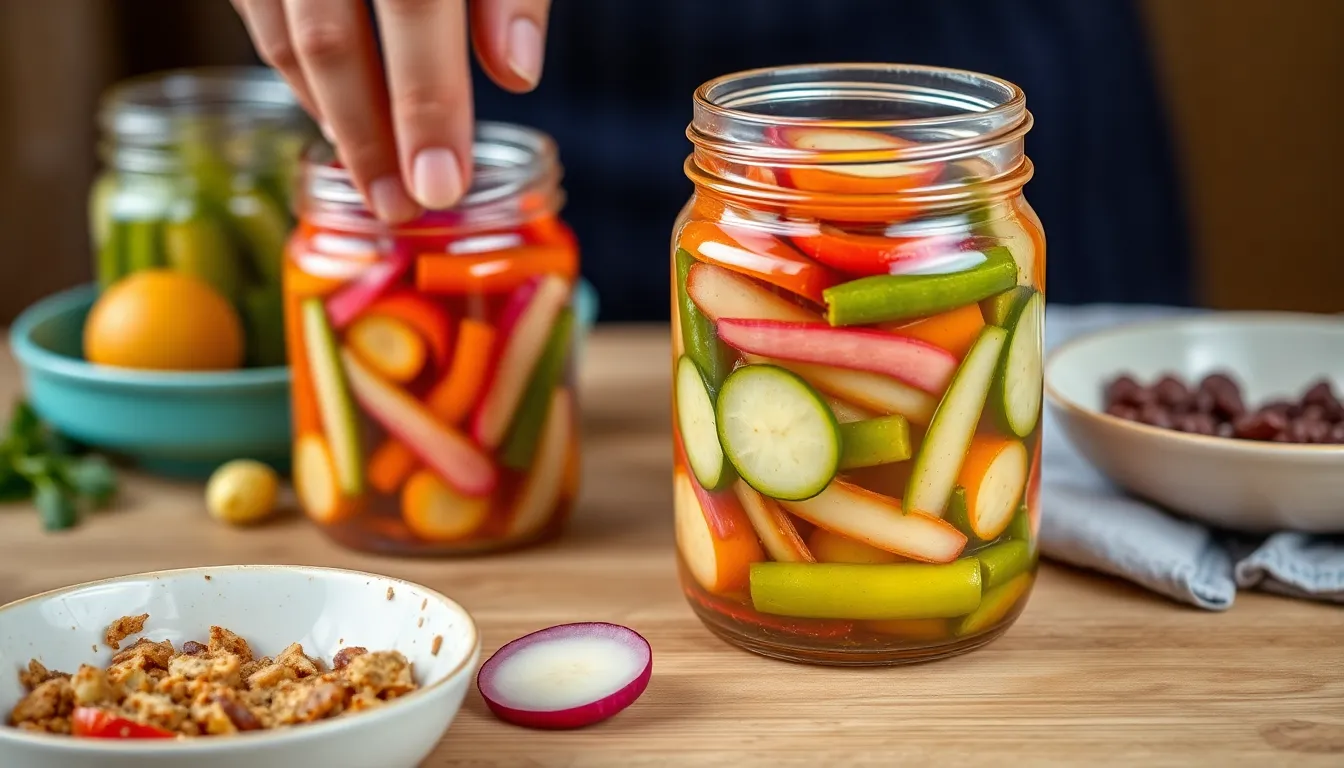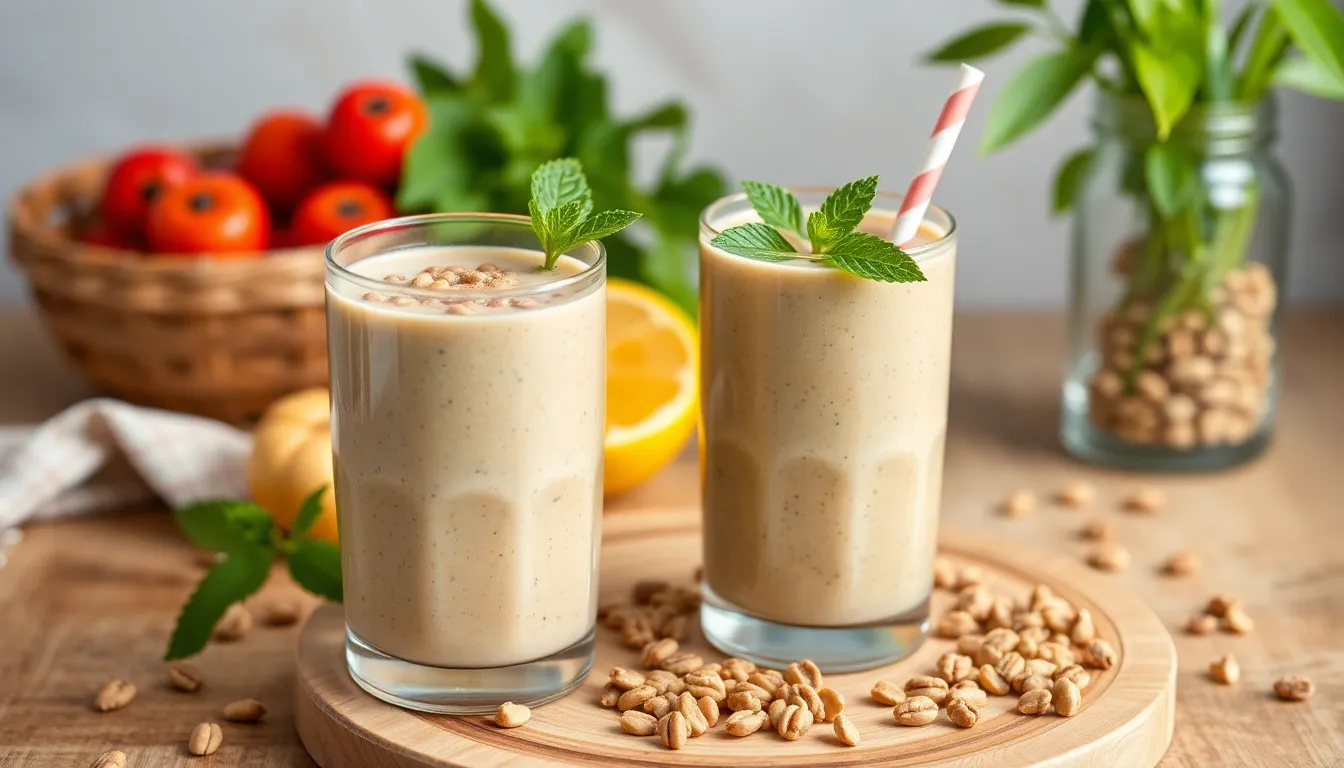The Best Pickling Recipes for Summer Vegetables
Introduction
As the summer sun shines brightly and gardens burst with fresh produce, there’s no better time to explore the delightful world of pickling summer vegetables. Pickling not only preserves the crunch and flavor of seasonal vegetables but also enhances them with a tangy twist, making them a perfect complement to a variety of dishes.
The benefits of pickling extend beyond mere preservation. It transforms your fresh vegetables into zesty bites that can elevate any meal, and it’s an act of creativity where you can customize flavors to your liking. In this article, we will delve into the essentials of pickling, share some of the best recipes for summer vegetables, and provide tips on how to store and enjoy your pickles.
Section 1: Understanding Pickling Basics
To fully enjoy the art of pickling, it’s essential to understand its basics. The pickling process is a method of preserving food by anaerobic fermentation in brine or immersion in vinegar. This process not only preserves the food but adds a distinct flavor profile that can be both savory and sweet.
Brief History of Pickling
Pickling has a rich history that dates back thousands of years. Ancient civilizations used pickling to preserve food for long journeys and harsh winters. Today, it remains a popular method for home cooks and chefs alike, celebrated for its simplicity and effectiveness.
Types of Pickling
- Quick Pickling: This method involves immersing vegetables in a vinegar solution and can be ready to eat within hours or days.
- Fermentation: This traditional method involves using brine and allowing natural bacteria to ferment the vegetables over time, resulting in a tangy flavor and probiotic benefits.
Key Ingredients for Pickling
When it comes to pickling, the right ingredients are vital. Here are the key components you’ll need:
- Vinegars: Common types include white vinegar, apple cider vinegar, and rice vinegar.
- Spices and Herbs: Dill, mustard seeds, garlic, and peppercorns are popular choices.
- Sugar and Salt: Sugar adds sweetness, while salt is crucial for flavor and preservation.
Section 2: Essential Tools for Pickling
Having the right tools can make your pickling experience smooth and enjoyable. Here’s a list of necessary tools you’ll need:
- Jars: Mason jars or specific pickle jars for storage.
- Lids and Bands: To seal your jars for preservation.
- Canning Pot: A large stockpot for boiling jars during the sterilization process.
- Funnel: For pouring brine into jars without spills.
- Ladle: To transfer brine into jars easily.
Essential Pickling Tools
| Tool | Purpose | Recommended Type |
|---|---|---|
| Mason Jars | Storage for pickled vegetables | Wide-mouth, quart-size |
| Canning Pot | Boiling jars for sterilization | Large stockpot |
| Funnel | Pouring brine without spills | Plastic or metal |
| Ladle | Transferring brine into jars | Stainless steel |
| Lids and Bands | Sealing jars for storage | Standard mason jar lids |
Section 3: Best Summer Vegetable Pickling Recipes
Recipe 1: Classic Dill Pickles
Ingredients:
- 8-10 small cucumbers
- 2 cups water
- 1 cup white vinegar
- 1/4 cup salt
- 4 cloves garlic, smashed
- 1 tablespoon dill seeds
- 1 teaspoon black peppercorns
Instructions:
- Wash the cucumbers and trim the ends.
- In a saucepan, combine water, vinegar, and salt. Bring to a boil until the salt dissolves.
- Place garlic, dill seeds, and peppercorns in sterilized jars.
- Pack cucumbers tightly into the jars.
- Pour the hot brine over the cucumbers, ensuring they are fully submerged.
- Seal the jars and let them cool to room temperature before refrigerating.
Tips for Achieving the Best Flavor:
- Let the pickles sit in the refrigerator for at least 48 hours before eating for optimal flavor.
- Experiment with adding red pepper flakes for a spicy kick.
Recipe 2: Spicy Pickled Carrots
Ingredients:
- 1 pound of carrots, cut into sticks
- 1 cup apple cider vinegar
- 1 cup water
- 1/4 cup sugar
- 2 tablespoons salt
- 3-4 cloves of garlic, sliced
- 1 tablespoon red pepper flakes
Instructions:
- In a saucepan, combine vinegar, water, sugar, and salt. Bring to a boil.
- Add the carrot sticks, garlic, and red pepper flakes to the jars.
- Pour the hot brine over the carrots, ensuring they are covered.
- Seal jars and allow to cool before refrigerating.
Suggested Pairings:
- Serve with sandwiches or as a tangy snack.
- Add to a cheese platter for a delightful contrast.
Recipe 3: Pickled Zucchini and Yellow Squash
Ingredients:
- 2 medium zucchinis, sliced
- 2 medium yellow squashes, sliced
- 1 cup white vinegar
- 1 cup water
- 1/4 cup sugar
- 2 tablespoons salt
- 1 tablespoon mustard seeds
- 1 teaspoon thyme
Instructions:
- Combine vinegar, water, sugar, and salt in a saucepan; bring to a boil.
- Pack zucchini and yellow squash slices into sterilized jars, adding mustard seeds and thyme.
- Pour the hot brine over the vegetables and seal the jars.
Variations to Try:
- Add sliced onions for extra flavor.
- Include red chili flakes for heat.
Recipe 4: Sweet and Sour Pickled Peppers
Ingredients:
- 4-5 bell peppers (any color), sliced
- 1 cup white vinegar
- 1 cup water
- 1/2 cup sugar
- 2 tablespoons salt
- 1 tablespoon coriander seeds
- 1 teaspoon black peppercorns
Instructions:
- In a saucepan, mix vinegar, water, sugar, and salt, and heat until the sugar is dissolved.
- Layer sliced peppers in prepared jars, adding coriander and peppercorns.
- Pour the hot brine over the peppers and seal tightly.
Ideal Uses for Pickled Peppers:
- Great in salads, sandwiches, or as a pizza topping.
- Add to tacos for a sweet and spicy kick.
Section 4: Creative Pickling Variations
Once you’ve mastered the basic recipes, it’s time to get adventurous. Here are some unique ingredients and flavor combinations to try:
Unique Ingredients to Experiment With
- Fruits: Consider pickling peaches, watermelon rind, or even cherries for a sweet twist.
- Different Vinegars: Experiment with balsamic for a deeper flavor or malt vinegar for a unique taste.
Flavor Combinations to Try
- Garlic and Chili Flakes: This combination brings heat and depth to your pickles.
- Ginger and Sesame Seeds: Perfect for an Asian-inspired pickling experience.
Tips for Customizing Your Pickling Brine
Don’t be afraid to adjust the sugar and salt levels to suit your taste. Always taste your brine before pouring it over your vegetables—it’s a great way to create a signature flavor profile!
Section 5: Tips for Storing and Enjoying Pickles
Once you’ve pickled your vegetables, proper storage is key to enjoying them for months to come.
Best Practices for Storage
- Refrigeration: Quick pickles can be stored in the fridge and enjoyed within a few weeks.
- Shelf Storage: For long-term storage, process your jars in a water bath canner to create a vacuum seal.
How to Tell if Pickles Have Spoiled
Always inspect your pickles before consumption. If you notice any off smells, mold, or unusual colors, it’s best to discard them. A fizzy sound when opening a sealed jar can also indicate fermentation gone wrong.
Serving Suggestions and Recipe Pairings
- Pickles make an excellent side dish for grilled meats.
- Chop them for use in relishes or salads.
- Use them to add crunch to burgers or sandwiches.
Conclusion
Pickling summer vegetables is a rewarding way to preserve the vibrant flavors of the season. Not only does it extend the shelf life of your fresh produce, but it also enhances them with zesty and sweet flavors that can be enjoyed all year round. Whether you opt for classic dill pickles or venture into creative combinations, each jar captures the essence of summer on your plate. So gather your tools, choose your favorite recipes, and embark on your pickling journey today!




